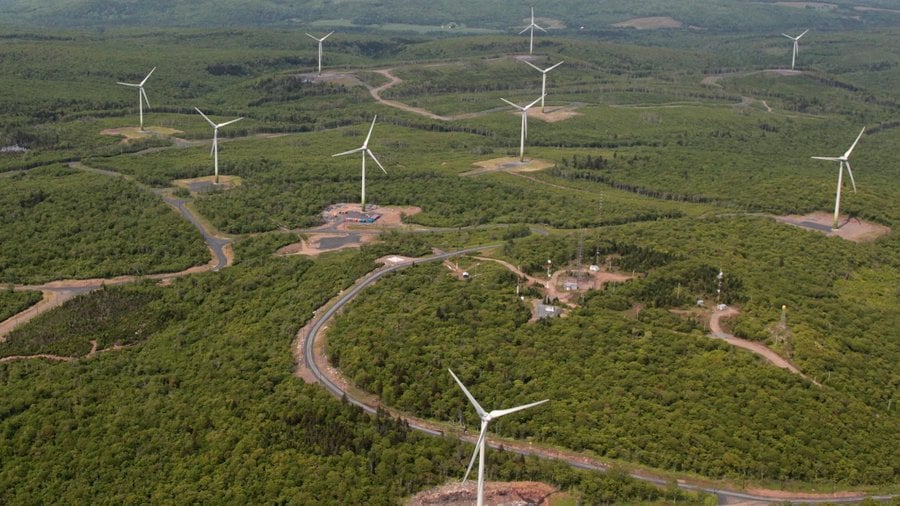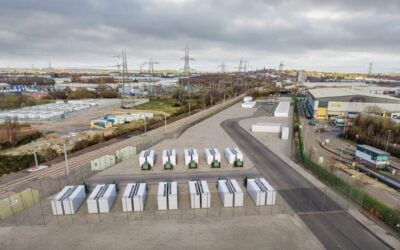
The government of Nova Scotia has unveiled a new clean energy plan which would see the Atlantic Canadian province deploy between 300MW and 400MW of battery storage by 2030.
Nova Scotia still depends heavily on coal for its electricity generation, but has a legislative target to phase out its use by 2030. It has also committed to reaching 80% renewable energy by that time, while also reducing greenhouse gas (GHG) emissions by 90% relative to 2005 levels.
Enjoy 12 months of exclusive analysis
- Regular insight and analysis of the industry’s biggest developments
- In-depth interviews with the industry’s leading figures
- Annual digital subscription to the PV Tech Power journal
- Discounts on Solar Media’s portfolio of events, in-person and virtual
One solution to help replace that capacity had been Atlantic Loop, a scheme to import hydroelectric generation from Quebec, but the costs of that project have tripled since 2020, from just under CA$3 billion (US$2.2 billion) to more than CA$9 billion, and it appears unlikely to be ready before 2030 due to supply chain issues, according to the Nova Scotia Department of Natural Resources and Renewables.
Similarly, three undersea transmission projects importing power from other provinces are imposing a severe cost burden on Nova Scotians, with the three having been commissioned, but delays in doing so brought on big replacement fuel costs.
Studies quoted by the Department found that energy imported via Atlantic Loop would come to between CA$200 and CA$250 per MWh, imports from provinces like New Brunswick and Newfoundland and Labrador would cost about CA$150 to CA$200.
Meanwhile, renewables come in much cheaper, with Nova Scotian onshore wind found to be the cheapest source by some distance at CA$45 to CA$60 per MWh and onshore wind-plus-batteries about CA$70 to CA$100.
The government wants to deploy around a gigawatt of new onshore wind energy generation by 2030, which would help it meet more than 50% of its energy needs. It would also deploy more than 300MW of large-scale solar PV by that time through existing programmes, and it has schemes in place to promote distributed solar, including recently introduced community solar and commercial net metering incentives.
Alongside that new renewable energy, the government said the province needs battery storage. What it was keen to emphasise is that work is already underway to increase solar, wind and storage capacities and that the plan’s areas of focus, which also include supporting electrification of buildings and transport and energy efficiency programmes, are achievable within the given timeframe.
The government also proposes increased transmission line interconnection with New Brunswick, as well as using some existing oil power plants as emergency and backup generation, converting 100MW of coal capacity to natural gas and adding about 300MW of hydrogen or equivalent low carbon fuel generation.
According to a Department of Natural Resources and Renewables fact sheet, Nova Scotia has “some of the most exceptional winds in the world,” with capacity factors that can exceed 50% in onshore settings, and the province has “even more” offshore wind potential.
‘Significant work to do’ in Nova Scotia following positive step forwards
In terms of energy storage, Nova Scotia energy minister Tory Rushton has already said earlier this year that the technology is crucial for the province’s energy sector. Rushton made those remarks as the provincial Electricity Act was amended to allow his department to run competitive procurements for grid-scale storage, or contract with developers and project owners directly.
That amendment to the Electricity Act is another example of a framework already being in place to enable Nova Scotia’s dash to decarbonise the majority of its energy use by 2030.
The latest plan, although criticised by some commentators in the Canadian press for not setting out an immediate pathway for implementation, was warmly welcomed by national trade organisation Energy Storage Canada.
“In jurisdictions around the world and in Canada, energy storage technologies are being demonstrated to be a cost-effective option for maintaining reliability as fossil fuel use is minimised. It’s great to see Nova Scotia formally announce their initial targets and directions for energy storage,” Energy Storage Canada executive director Justin Rangooni said.
Rangooni did acknowledge that there remains “significant work to do” in continuing to integrate the government’s new approaches “into existing legacy policy and regulatory frameworks”.
“But now that the Clean Power Plan identifies the destination, industry and stakeholders can support government on the journey for how we get there, and beyond.”
Energy Storage Canada noted in a statement sent to Energy-Storage.news that the Nova Scotia government is also seeking to explore its options with regards to deploying long-duration energy storage (LDES) resources.






